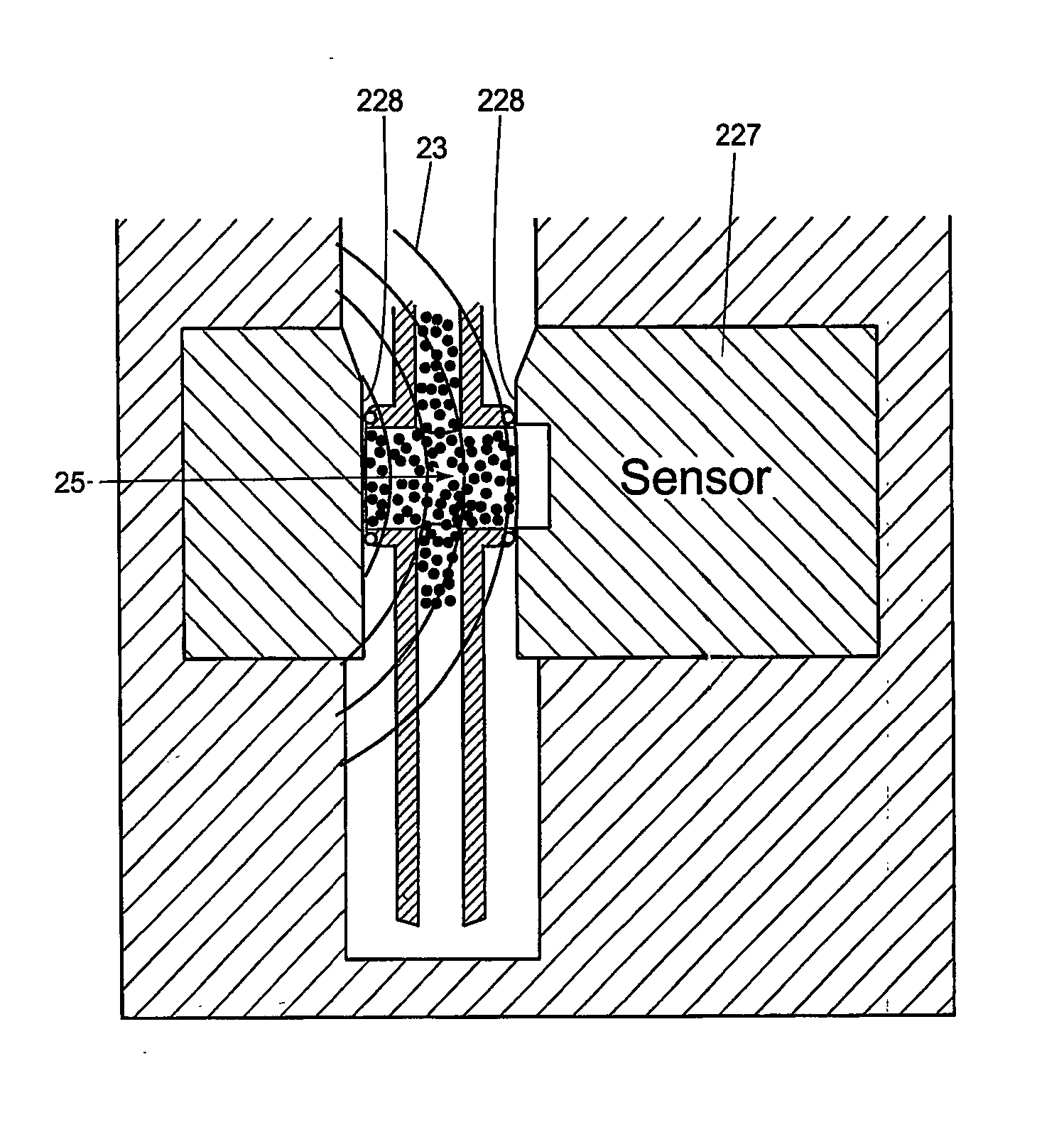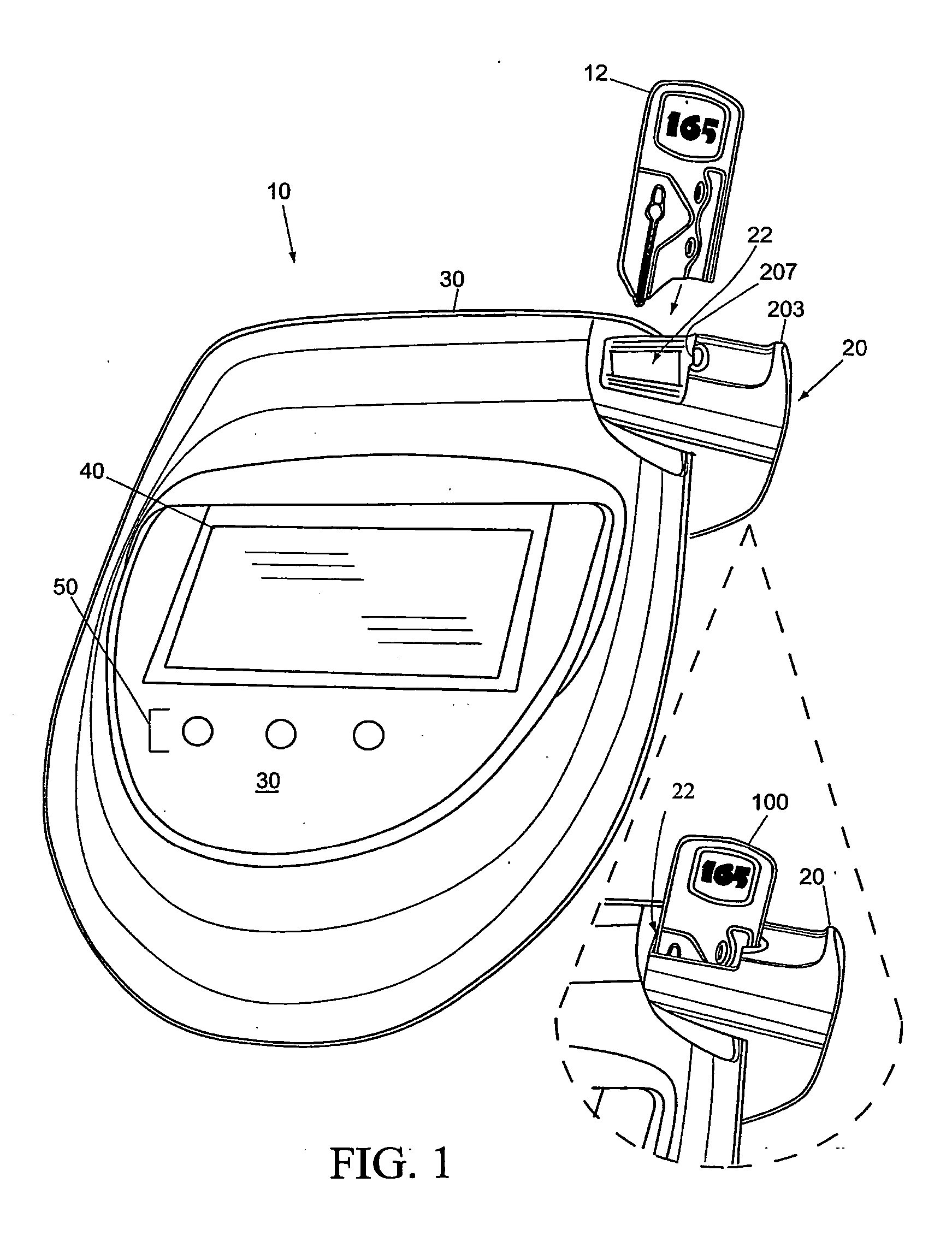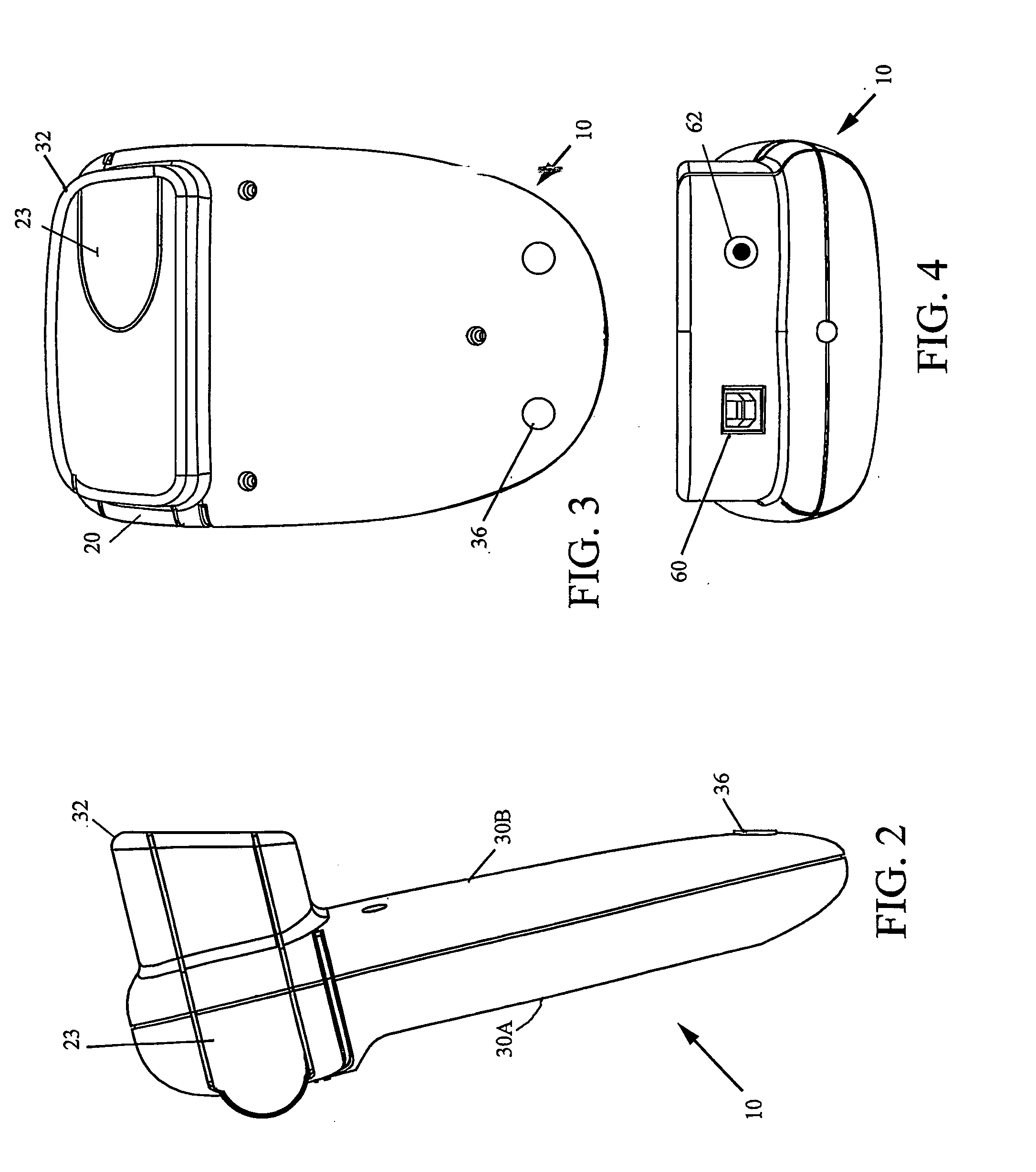Method and Apparatus for Ultrasonic Determination of Hematocrit and Hemoglobin Concentrations
a technology of hematocrit and hemoglobin, applied in the field of ultrasonic measurement of hematocrit and/or hemoglobin concentration of a small blood sample, can solve the problems of limiting the diagnostic value of these devices, the relative accuracy of these devices is not immediately available, and the inability to measure hct or hgb in the field to the same accuracy, etc., to achieve simple, accurate and quick measurements of hct and hgb concentration
- Summary
- Abstract
- Description
- Claims
- Application Information
AI Technical Summary
Benefits of technology
Problems solved by technology
Method used
Image
Examples
Embodiment Construction
[0060] The present invention is a system inclusive of method and apparatus for measuring the HCT and HGB concentration of blood using ultrasonics. The preferred embodiment described herein is the very first point of care HCT and / or HGB measurement device with accuracy comparable to larger CBC lab equipment.
[0061]FIGS. 1-4 are a front perspective view, right side view, bottom view, and back view, respectively, of the system inclusive of field-portable analyzer 10 and disposable blood sampling device 12 in accordance with the present invention. With combined reference to FIGS. 1-4, the present analyzer 10 accepts the disposable blood sampling device 12 (containing a small blood sample) in a sample door 20. Door 20 is closed, and an automatic test sequence is carried out by which the analyzer 10 accurately measures the hematocrit (HCT) and / or hemoglobin (HGB) from the blood sample, which remains safely contained within the disposable 12. Analyzer 10 is a point of care HCT and / or HGB m...
PUM
 Login to View More
Login to View More Abstract
Description
Claims
Application Information
 Login to View More
Login to View More - R&D
- Intellectual Property
- Life Sciences
- Materials
- Tech Scout
- Unparalleled Data Quality
- Higher Quality Content
- 60% Fewer Hallucinations
Browse by: Latest US Patents, China's latest patents, Technical Efficacy Thesaurus, Application Domain, Technology Topic, Popular Technical Reports.
© 2025 PatSnap. All rights reserved.Legal|Privacy policy|Modern Slavery Act Transparency Statement|Sitemap|About US| Contact US: help@patsnap.com



